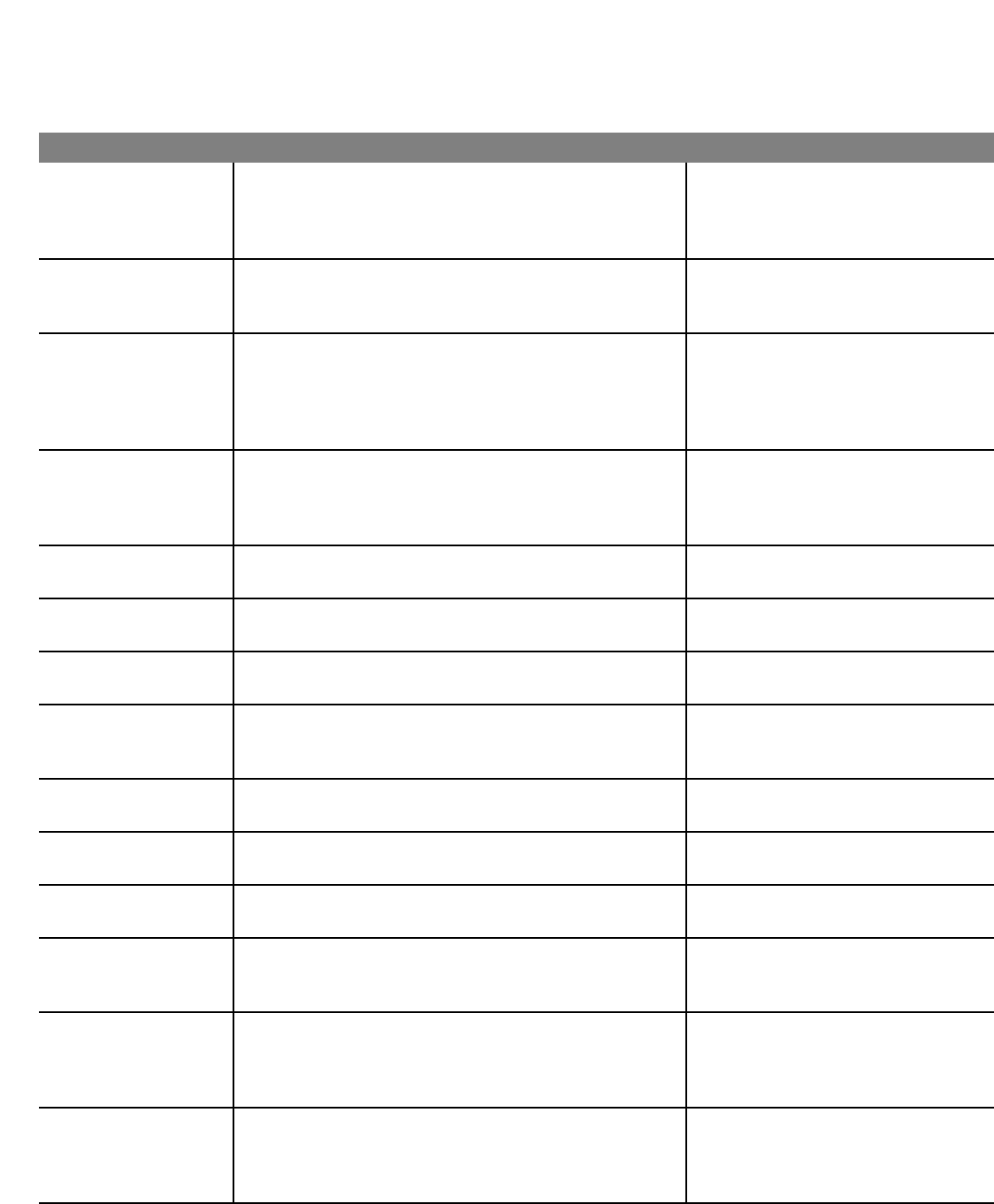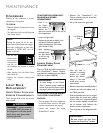
17
FRESH FRUITS
Apples
Apricots
Berries:
Blackberries
Blueberries
Raspberries
Strawberries
Cantaloupe
Cherries
Cranberries
Grapefruit
Grapes
Kiwifruit
Lemons and Limes
Mango
Nectarines
Oranges
Papaya
SELECTION
Look for apples with firm, smooth skin and good color.The
presence of scald, which is a dry brown patch on the skin
does not affect taste. Handle with care to avoid bruising and
skin damage.
Select plump, fairly firm apricots that are golden or burnt
orange in color. Avoid if there are soft or mushy spots or
the apricot is pale yellow to greenish-yellow.
Good quality berries should be dry, clean, plump and well-
colored.
Blackberries: The caps should not be still attached.
Blueberries: Should have a silvery sheen or “bloom.”
Strawberries: Caps should be fresh, green and intact.
Cantaloupe will not ripen after harvest. Select those that
are heavy for their size, symmetrical and have a sweet fra-
grance. The “netting” should be thick with a golden back-
ground color, not green.The stem end should give slightly.
Cherries should be plump with firm, brightly colored skins
and green stems.
Choose cranberries that are firm and well-colored. Avoid
if they are shriveled or soft.
Choose a grapefruit that is heavy for its size and flat on
both ends.
Choose grapes that are plump and firmly attached to green
pliable stems.
Good quality kiwifruit is plump without wrinkles or signs of
exterior damage.
Choose fruit that is firm and heavy for its size.
Choose pieces that are free of bruises and blemishes.
Mangoes that are ripe will give to gentle pressure.
Look for fruit that is orange-yellow between areas of red,
without any green.Skin should be smooth and unblemished.
Choose firm fruit that is heavy for its size. Avoid any with
soft spots or white mold at the ends. It is normal for ripe
oranges to have a slight greening.
A papaya should be firm with unblemished skin, regardless
of the degree of ripeness.
STORAGE
Store in the ClimateZone™ drawer on
the “Produce” setting.
Ripen at room temperature. When ripe,
store in the ClimateZone™ drawer on
the “Produce” setting.
Store in the ClimateZone™ drawer on
the “Produce” setting. Store in original,
vented carton.
When uncut, store on countertop. After
cutting, store in the ClimateZone™
drawer on the “Produce” setting.
Store in the ClimateZone™ drawer on
the “Produce” setting.
Store in the ClimateZone™ drawer on
the “Citrus” setting.
Store in the ClimateZone™ drawer on
the “Citrus” setting.
Store in the ClimateZone™ drawer on
the “Produce” setting. Do not store in air-
tight packaging.
Store in the ClimateZone™ drawer on
the “Produce” setting.
Store in the ClimateZone™ drawer on
the “Citrus” setting.
Store at room temperature.
Ripen at room temperature, then store in
the ClimateZone™ drawer on the
“Produce” setting.
Keep oranges separated from foods that
absorb odors such as, cheese or butter.
Store in the ClimateZone™ drawer on
the “Citrus” setting.
Store at room temperature. A papaya is
ready to eat when the peel is approxi-
mately
3
⁄4 yellow to yellow-orange in color
and it yields to gentle palm pressure.
continued…
FRUIT SELECTION AND
STORAGE CHART


















